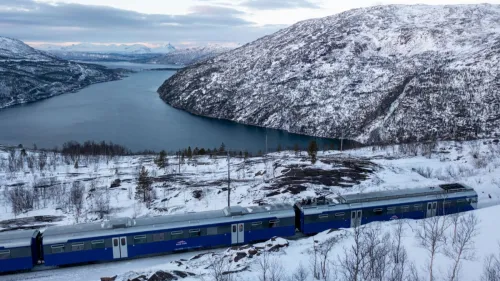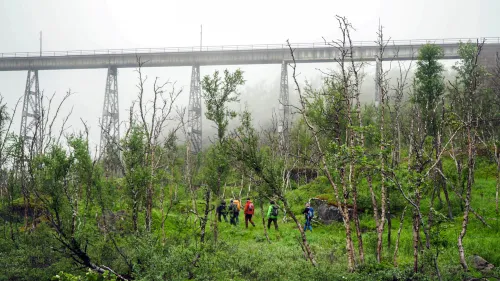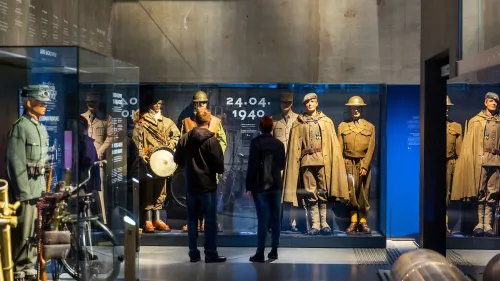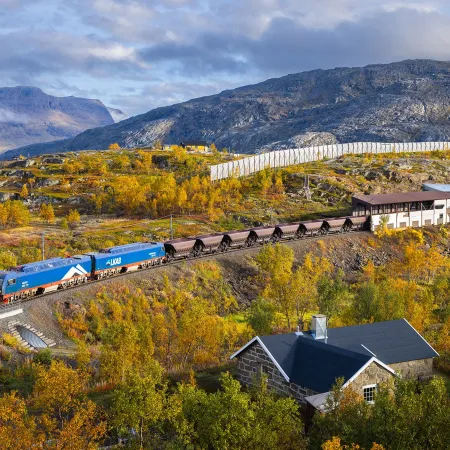Ofoten Railway
The Ofoten Line, or Ofotbanen, is unique—though it stretches 42 km (26 miles) through Norway, it is not connected to the rest of the country's railway network. However, it does link with the Swedish railway system at the border, continuing on to Kiruna and beyond. Remarkably, one curve just outside of Narvik marks the northernmost point of the Western European standard gauge railway network. From Narvik, you can board a train and travel to nearly any destination across Europe. Alternatively, enjoy a shorter round-trip to the Swedish border, where you can take in the breathtaking variety of landscapes along the route.
The Construction
In the 19th century, accessing the vast iron ore deposits of northern Sweden was an enormous challenge. The rugged terrain, unforgiving weather, and the lack of a nearby ice-free port made it a daunting task. This struggle, however, led to the creation of one of the most remarkable railway lines in the world: the Ofoten Railway.
For those eager to explore the rich history of this railway, its vintage trains, the incredible engineering achievements in arctic landscapes, and the stories of the heroes who built it, Narvik Museum is a must-visit. (Insider tip: they have an EL12 electric locomotive in the museum garden that you can explore!)
During construction, itinerant workers known as "navvies" flocked to what was dubbed Europe’s “Klondike.” At its peak, over 5,000 people worked on the railway. The endeavor was monumental, with the track climbing more than 500 meters in just four miles, cut into a mountainside high above the fjord. Completed in 1902, this 168-kilometer engineering marvel finally unlocked Kiruna’s vast iron ore reserves.
Today, you can hike the Navvy Road, retracing the steps of those who built the Ofotbanen Railway. If you begin your hike at the Swedish border at Riksgrensen station, you’ve crossed into Norway on foot, definitely a bucket-list achievement! Along the way, you’ll encounter remnants of their work, from informational signs to ancient ruins, allowing you to immerse yourself in the historical journey.
The trail is well-maintained, with stone paving and steps, making it accessible for all able-bodied hikers. The route is entirely downhill, so it’s an easy walk, with plenty of benches and campfire spots for breaks. Lush vegetation and stunning waterfalls line the path, adding to the scenic experience.
The trail ends at the picturesque Rombaksbotn, once home to the navvies. While the houses are long gone, the history still lingers, set against a dramatic backdrop of towering 1,500-meter mountains and the bay below.
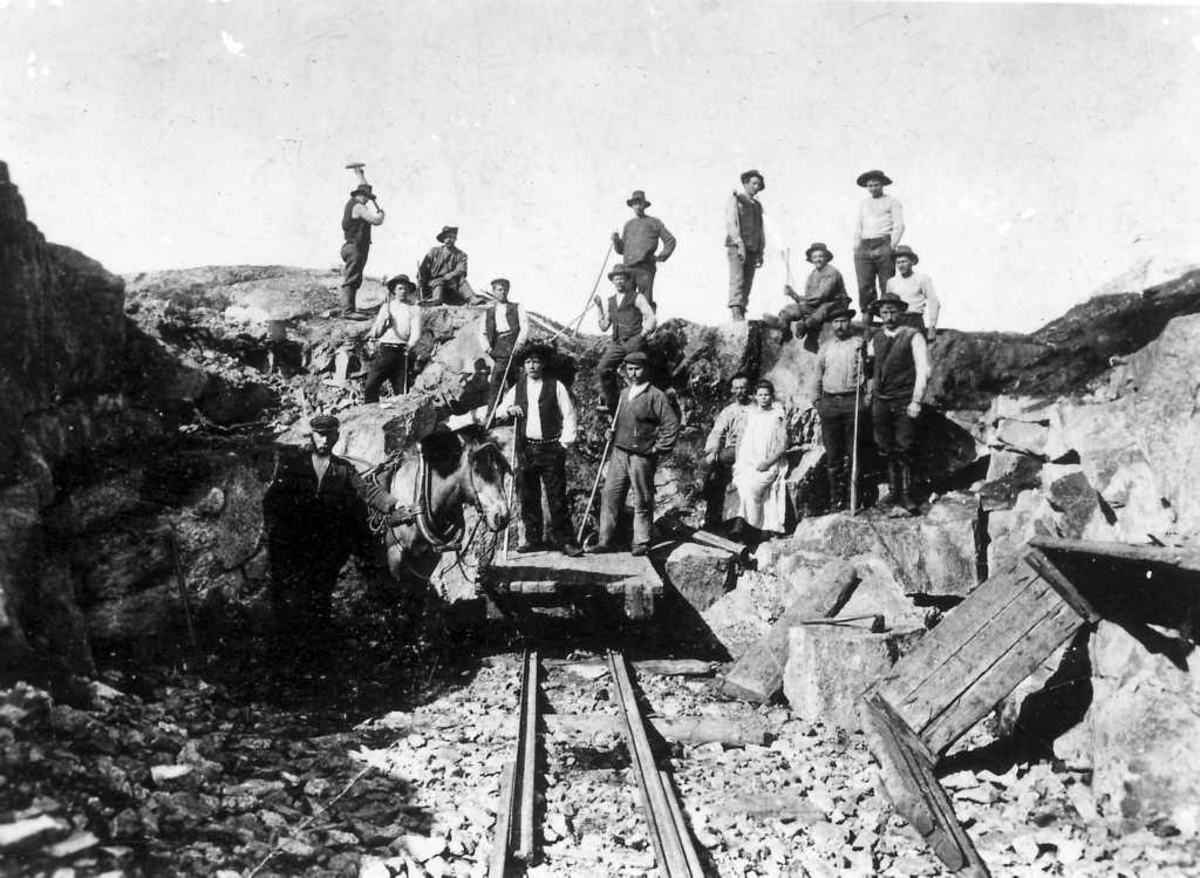
During the construction phase, a team of laborers, known as navvies, toiled alongside horses and cooks.
Museum Nord
Electrification
In the early days, steam locomotives hauled iron ore-laden trains along the Ofoten Line, even managing the harsh winter conditions with ease. However, by 1923, the line transitioned to electric power for greater efficiency, allowing the entire route from Narvik to Luleå to be operated by electric trains.
The automation and modernization of mining operations on the Swedish side led to a surge in ore production, which increased the volume transported to Narvik for global shipping. To handle these larger loads, stronger locomotives were needed, and the move to electric power also provided independence from coal imports.
The new electric locomotives not only had superior pulling power but also eliminated the smoke and soot that once filled the air as steam trains passed. Today, electric locomotives are a familiar sight on the Ofoten Line.
If you're a true train enthusiast or just starting to appreciate the world of trains, be sure to check out our article on the trains of the Ofoten Line, available for you to explore in Narvik city center.
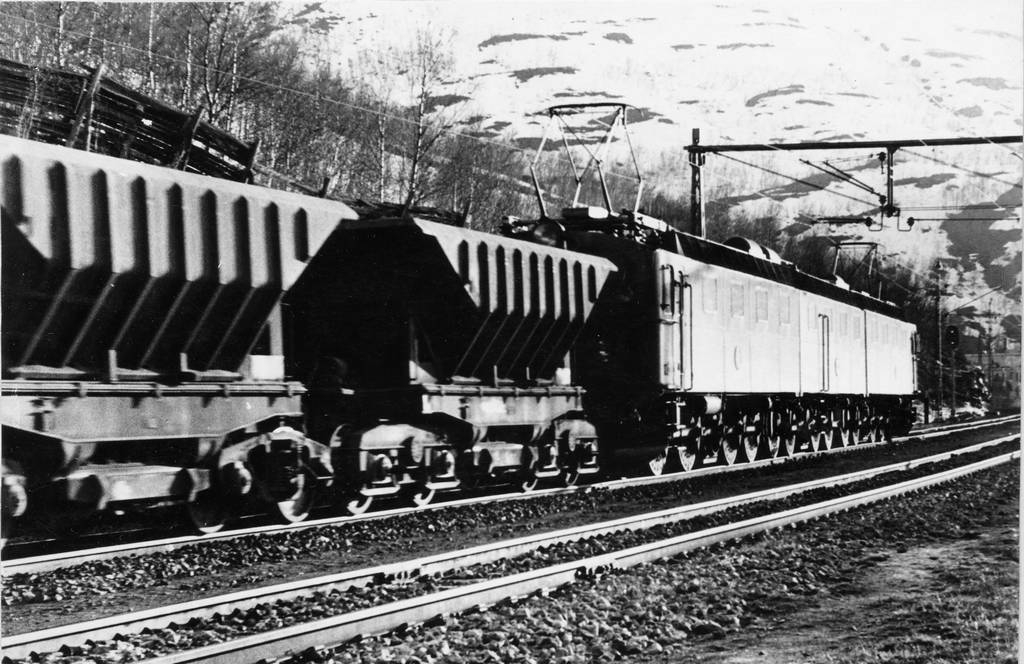
A Swedish electric locomotive of the Dm3 type pulls a train loaded with ore.
Museum Nord
War Along the Railway
During World War II, control of the iron-ore railway was crucial for the Third Reich, as it was the sole route for exporting Europe’s largest and most vital iron ore deposits. For the Allies, stopping this supply was equally critical. As a result, much of the fighting during the Battles of Narvik took place along the railway line.
For those looking to truly experience the history, the guided War History Hike along the railway offers a unique way to walk in the footsteps of those who fought here. This 7-hour hike covers approximately 8 kilometers of relatively easy, hilly terrain, leading you through the intense battles of Narvik in the spring of 1940. Along the way, your guide will connect the political backdrop that led to the conflict with the personal stories of courage and fate on the front lines.
A visit to the renowned Narvik War Museum is highly recommended to learn more about the Battle of Narvik. The museum offers a modern, immersive experience through artifacts, interactive displays, texts, and photographs, providing a detailed account of the battle and the subsequent occupation. It also explores contemporary perspectives on "us" and "the others." A visit to the Narvik War Museum will leave you with answers to these questions and much more.
A notable incident in the fighting along the railway involved a daring attempt by Norwegian forces to destroy the Norddalsbrua railway bridge at the top of the Hundalen valley. Immortalized in the Netflix blockbuster Narvik, Norddalsbrua has become a powerful symbol in the portrayal of the Battle of Narvik.
On April 14, 1940, Norwegian forces made a valiant effort to demolish the bridge in order to stop the advancing German troops, mirroring the events depicted in the film. However, ice in the explosive chambers diminished the damage, allowing the Germans to swiftly repair it. Today, the bridge stands as a reminder of both the strategic importance of the Ofot Railway and the resilience of the Norwegian forces.
Visitors can glimpse the bridge while traveling along the railway or reach it on foot by following the Navvies' road, which runs from Riksgrensen to Rombaksbotn.

Immortalized in the film, Norddalsbrua is today a symbol of the movie Battle of Narvik.
Nordisk FIlm
Heavy Haul
Today, the Ofoten Railway, operated by LKAB and Kaunis Iron, is a cornerstone of Scandinavia’s economy. Every day, 10-12 iron ore trains traverse the railway, each hauling 68 wagons loaded with 100 tons of ore. This staggering capacity means each train carries enough material to produce 68,000 cars. Over its 120-year history, the line has shipped more than 1 billion tons of iron ore.
But the railway’s importance isn’t limited to ore transport. It’s also a lifeline for northern Norway, with 90% of groceries from southern regions making their way north via this railway. To handle such demands, the strongest locomotives on the market are employed, ensuring efficiency and reliability.
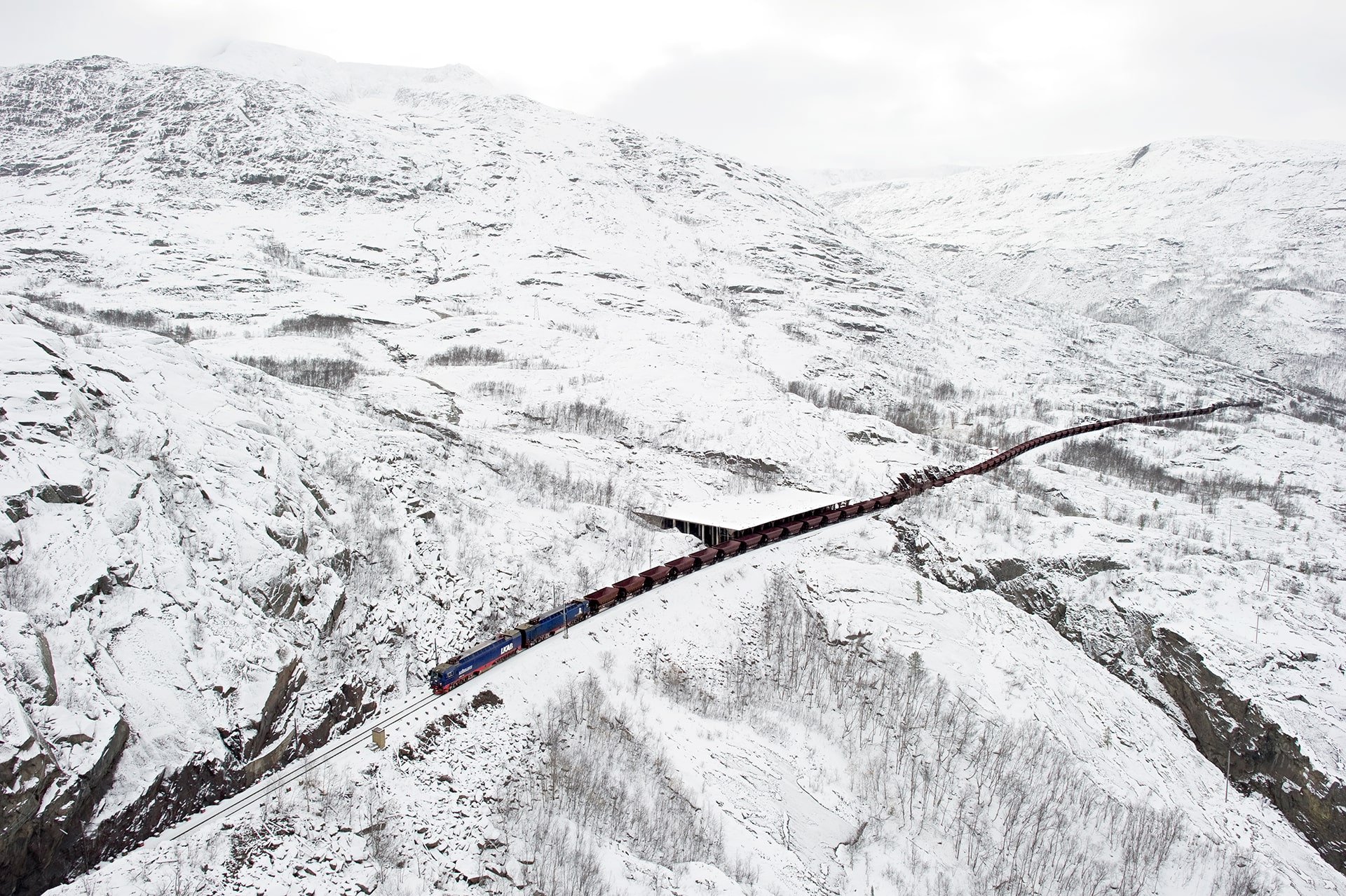
An aerial view captures vast iron trains navigating rugged Nordic terrain.
Museum Nord
Through history and nature
A ride on the Ofoten Railway is more than just a train journey; it’s a voyage through history and some of the world’s most stunning landscapes. Passengers experience a tapestry of miners’ dreams, wartime tales, and breathtaking Nordic vistas.
Whether you’re an adventurer, a history enthusiast, a trainspotter or a lover of natural beauty, the Ofoten Railway promises an unforgettable journey. It’s a testament to human ingenuity, resilience, and the enduring attraction of the Arctic frontier. For those visiting Narvik or Swedish Lappland, a ride on this legendary railway is not to be missed.







